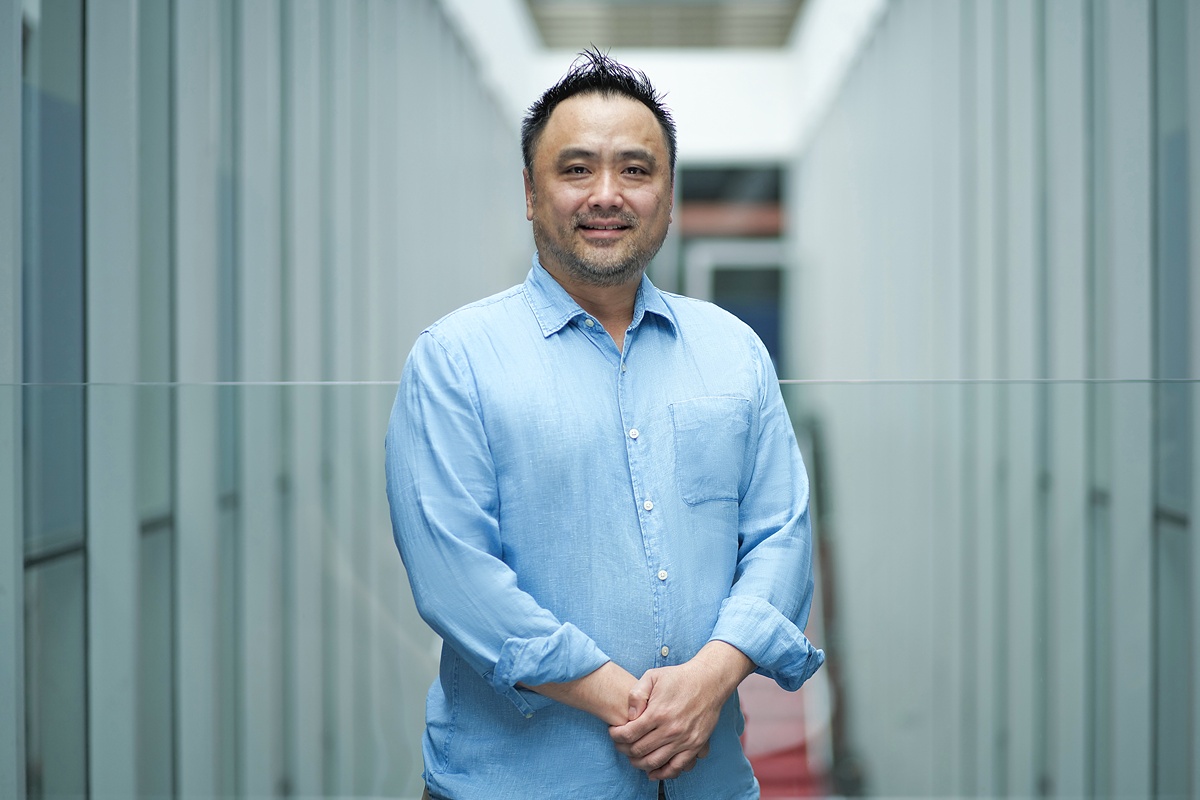
Now that Vietnamese users have access to Google Veo 3, anyone with a keyboard and an idea can “direct” a near-cinematic video using only text prompts. The interface is simple; the results are stunning. Within seconds, users can generate visuals that mimic film direction - complete with camera motion, lighting effects, ambient sound, dialogue, and music - all without ever touching a camera.
While much of the conversation around generative AI focuses on whether machines will replace human creativity, Mr Tom Nguyen, Associate Lecturer in Digital Media, School of Communication & Design - RMIT Vietnam, offers a different perspective: AI will not destroy creativity, it will liberate it.
Since early 2025, the AI video race has moved at breakneck speed. OpenAI’s Sora astonished the world with its silent, realistic 60-second video clips. ByteDance launched Seedance, while Runway Gen-4 and Kling AI rolled out their own hyper-realistic video tools. But Google Veo 3 quickly distinguished itself for its unique ability to generate both high-fidelity visuals and synchronised audio from a single text input.
 Mr Tom Nguyen believes AI tools like Google Veo 3 are unlocking new ways of storytelling for Vietnam’s next generation of digital creatives. (Photo: RMIT)
Mr Tom Nguyen believes AI tools like Google Veo 3 are unlocking new ways of storytelling for Vietnam’s next generation of digital creatives. (Photo: RMIT)
Now, with Veo 3 officially accessible to users in Vietnam via the Gemini app, a powerful tool has entered the hands of local creatives - not just filmmakers and content creators, but anyone who wants to experiment with visual storytelling.
Public and media reaction to Veo 3 has been swift and sharply divided. Hailed as a cinematic milestone akin to the leap from silent films to The Jazz Singer, the model impressed international reviewers with its seamless fusion of visuals and sound. Yet despite the acclaim, critics quickly raised red flags, warning of creative stagnation, content misuse, and troubling ethical blind spots. Some reviews labelled it “a slop monger’s dream,” warning that the tool, while technically impressive, often yields formulaic results and invites low-effort, repetitive content creation. More troubling, The Verge and other outlets reported that racist and antisemitic videos - apparently created using Veo 3 - have gone viral on TikTok, with some clips amassing over 14 million views before takedown. These included hate-fueled stereotypes and disturbing reenactments of historical atrocities.
Despite having strict anti-hate policies, both TikTok and Google have struggled to keep up with enforcement. The combination of Veo 3’s high realism and ease of bypassing content filters has made it easier for users to spread offensive material at scale - and harder for platforms to respond in time. With Google planning to integrate Veo 3 into YouTube Shorts, concerns are growing that toxic content could spill over to even larger audiences.
In Vietnam, public reaction on social media has been a mix of excitement and caution. Within just two weeks, a Hanoi-based transport company using Veo 3 for promotional clips saw a 20% increase in bookings, while an auto accessories retailer in the capital reported monthly revenues of 60 million VND thanks to high-quality AI-generated marketing videos.
However, some users expressed frustration over Veo 3’s current limitations, particularly its 8-second cap and the restriction of just 10 videos per month, saying it "limits the experience for longer-form advertising campaigns." One Vietnamese outlet even issued a warning about the growing trade in unofficial Veo 3 accounts, cautioning that users who rely on VPNs or third-party sellers risk account suspension, financial loss, and compromised data security.
Mr Tom Nguyen is one of those thinking seriously about that question. Beyond academia, Tom also runs three creative businesses in visual effects, game design, and toy production - all of which have already integrated AI into their everyday workflows. In his view, Veo 3 is just one signal of a larger transformation. AI isn’t here to take away jobs or creative spark. Instead, it’s helping creators refocus on what matters most.
 With just a text prompt, users can generate high-quality video demos, changing how creative teams pitch ideas and visualise campaigns. (Photo: Luke - stock.adobe.com)
With just a text prompt, users can generate high-quality video demos, changing how creative teams pitch ideas and visualise campaigns. (Photo: Luke - stock.adobe.com)
“In my companies, AI has helped free up time so artists can actually be more creative,” Tom explains. “VFX teams can manage complex sequences more fluidly. The game team doesn’t have to spend time coding from scratch. And in toy production, we’ve found better materials and techniques in minutes - what used to take days.” By automating the repetitive or overly technical aspects of creation, Tom believes AI opens up a new space for human vision, enabling creatives to step into roles like Art Director, Curator, or Creative Strategist. The challenge is no longer mastering every tool but learning how to think more deeply about what we create and why.
Beyond internal workflows, Tom notes that Veo 3 could also reshape how creative teams pitch to clients. “Instead of showing static moodboards or slides, we can now generate short moving demos that look and feel like real ads or trailers,” he says. “That level of immediacy helps clients visualise the concept more clearly and makes it easier to secure buy-in, even for experimental ideas.”
This shift, Tom argues, will redefine the future of creative work, especially for young Vietnamese creators. The creative pipeline is changing. Traditional roles like editors or animators may no longer be central. Instead, new hybrid positions, like prompt-based storytellers or AI visual directors, are emerging. Media education must evolve accordingly. “Visual literacy is becoming the new language,” he notes. “Students won’t just need to know how to edit or shoot; they’ll need to know how to design prompts that communicate tone, rhythm, feeling, and culture.”
The arrival of Veo 3 in Vietnam could have implications for the creative sector. As the country’s creative sector rapidly grows, the availability of world-class AI tools could help level the playing field. In a region where many young creators face limitations in funding, equipment, and training, tools like Veo 3 offer a low-barrier entry point into professional-level production. "You no longer need a big budget or a film crew - just imagination and a clear prompt," Tom says. This could be a turning point for digital artists, content creators, and even small businesses looking to stand out.
At the same time, the rise of polished, AI-generated visuals may come with a cost: a gradual erosion of creative identity. When everyone uses the same tools, Tom warns, the outputs may start to feel uniform - too clean, too perfect, too generic. That’s why he believes creators must double down on what makes their voice unique. “In Vietnam, that means drawing on local dialects, emotional nuance, storytelling traditions, cultural depth,” he says. “AI can mimic visuals, but it can’t replicate the soul behind them unless we let it.”
Legal and ethical challenges are also mounting. What happens if a Veo 3-generated video is used to spread misinformation? Who is liable - user, the platform, or Google itself? Tom calls for clearer intellectual property frameworks and shared accountability among creators, platforms, and regulators. As tools become more powerful, responsibility must scale with them.
 Mr Tom Nguyen imagines a “meaning economy” where creators pursue projects with personal, cultural, or social value. (Photo: pressmaster - stock.adobe.com)
Mr Tom Nguyen imagines a “meaning economy” where creators pursue projects with personal, cultural, or social value. (Photo: pressmaster - stock.adobe.com)
Yet amid these concerns, Tom sees something even more profound unfolding. With machines increasingly capable of doing what once required large teams and weeks of labour, humanity stands on the brink of a post-labour economy. “In three to five years, I believe AI will be able to perform all the cognitive and creative tasks that humans can today,” he says. “So we need to ask: What kind of work will we choose to do when we no longer have to work to survive?”
The answer, for him, lies in meaning. Tom imagines a “meaning economy” where creators no longer chase commercial output just to stay afloat, but instead pursue projects with personal, cultural, or social value. “AI will allow us to say no to meaningless work,” he explains. “We’ll have more time for expression, connection, and human experience.”
This transformation is especially timely as Vietnam accelerates its national agenda on digital transformation, the creative economy, and AI development. Policies promoting digital content creation, innovation hubs, and media-tech startups align closely with the capabilities that generative AI tools unlock.
The impact also ripples across Vietnam’s growing creator economy, from advertising agencies and TikTok creators to indie game designers and educational content startups. With the right tool, a small team (or even a single user) can produce cinematic-quality videos for storytelling, marketing, or education - a leap that may help level the playing field for local talent competing globally.
Education, in his view, is the frontline of this transition. He advocates for a media curriculum that prioritises creative thinking, ethics, and purpose - not just technical skills. Students should be trained to design prompts as thoughtfully as they write scripts and taught to verify content as rigorously as they craft it. It’s not about replacing creativity but expanding how we understand and apply it.
Tom also points out that while Google Veo 3 is currently a frontrunner, it won’t be alone for long. “Just two weeks after launch, there’s already an open-source model that outperforms it in some ways,” he notes. The pace of development is exponential, and no one company will hold the lead forever. What matters most isn’t the tool, but how it’s used and by whom.
Tom believes the future belongs to those who collaborate with AI, not compete against it. “The winners won’t be the ones who try to beat AI at its own game,” he says. “They’ll be the ones who use AI to tell stories only humans can tell.”
The cameras may now be virtual. But the creative lens still belongs to us.
Story: Quan Dinh H.
Masthead image: gnepphoto - stock.adobe.com
Thumbnail image: FilipB - stock.adobe.com
The US tariff shock has hit Vietnam’s fashion and textile exports hard. As 2025 comes to an end, the focus shifts to resilience and growth in 2026. What should businesses do to stay competitive in the new trade reality?
Blended learning is reshaping how communication students learn, collaborate, and equip themselves for a rapidly evolving industry, according to academics from RMIT Vietnam’s School of Communication & Design.
AI should not only drive efficiency and innovation but also empower individuals who have historically faced barriers, said Dr Abdul Rohman from RMIT Vietnam’s School of Communication & Design.
As global heritage faces threats from war, urbanisation and climate change, a race to digitise culture has emerged and Vietnam is beginning to find its place.